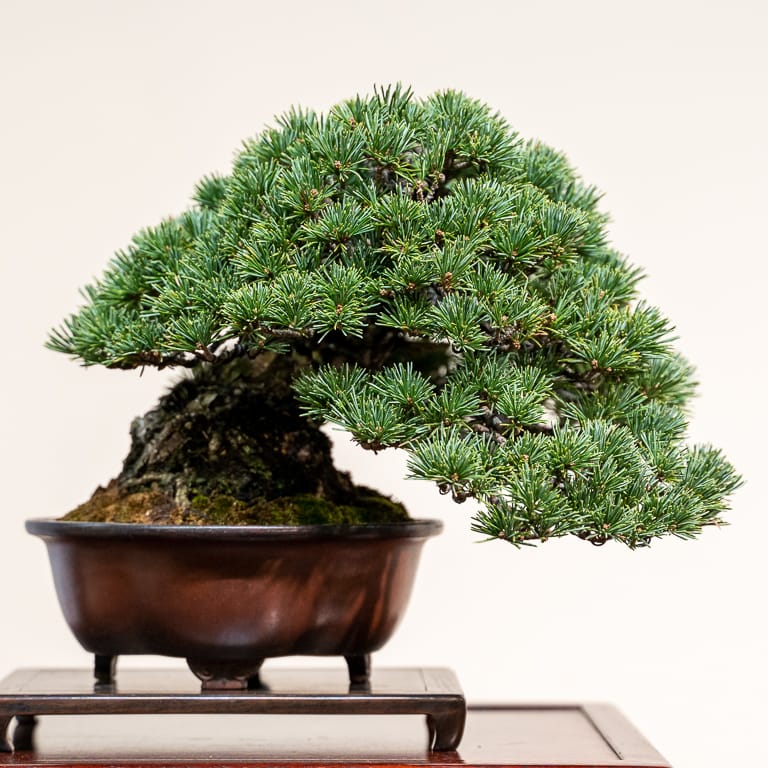Today I’d like to share a single tip for styling shohin bonsai – focus on branch density. As you look at photos of shohin displayed at this year’s Kokufu exhibit, you’ll notice that all of the trees are full. There’s a good reason for this. Because the trees are displayed in groups, it makes sense […]
Japan
Kokufu 101: conifers
You can often tell the species of a tree by its shape. The tree below could be one of three different species – needle juniper, cryptomeria, or hinoki cypress. Looking closer at the foliage,we can see this is a hinoki, a species that’s commonly styled as formal upright bonsai with highly refined branch pads. Formal […]
Kokufu 101: deciduous bonsai
When designing deciduous bonsai, one of the biggest decisions is how to form the branches. Some of the key considerations are the angle at which the branches emerge from the trunk (do they go up, down, or out), the basic movement (curvy or straight), and the silhouette or outline (pointy or round) of the tree. […]
Kokufu 101: Japanese black pine
One of the most valuable aspects of a visit to the Kokufu exhibit is the opportunity to study great trees in person. Just looking at a handful of pines, for example, can reveal very different approaches to creating branch structures and silhouettes. Let’s start by looking at four medium-size trees. The first tree has very […]
Displays at the 7th Japan Suiseki Exhibition
Some of the larger stones at this year’s Japan Suiseki Exhibition were displayed with scrolls. Because the stones take up less visual weight than larger bonsai, the scrolls are larger than what we’re used to seeing in bonsai displays. Stone display with scroll – Furuya ishi Scroll display with stone – Kamogawa fugo oroshi ishi […]




